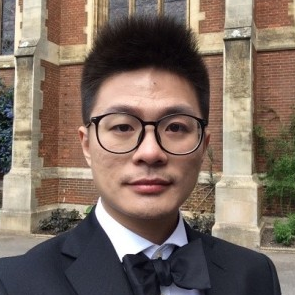Optics for AI and AI for Optics
A special issue of Applied Sciences (ISSN 2076-3417). This special issue belongs to the section "Optics and Lasers".
Deadline for manuscript submissions: closed (30 November 2019) | Viewed by 64572
Special Issue Editors
Interests: optics communications; signal processing; modulation/coding; machine learning
Special Issues, Collections and Topics in MDPI journals
Interests: DSP; machine learning; optical communications and networks
Interests: smart fiber lasers; intelligent optical communications
Special Issues, Collections and Topics in MDPI journals
Interests: optical communications; DSP; machine learning
Special Issue Information
Dear Colleagues,
We now live in an era of information explosion and digital revolution that has resulted in rapid technological developments in different aspects of life. Artificial intelligence (AI) is playing a key role in this digital transformation. New AI applications require edge cloud computing with low latency connections, where the significant challenge is that it needs a lot of computer processing power. It is envisaged that optics could tackle this power issue efficiently by interconnecting AI compute clusters and additionally simplifying the fundamental computing architecture, thus providing significant power consumption savings.
On the other hand, optical networking becomes more and more complex, driven by more data and more connections. Generating, transmitting, and recovering such high-volume data requires advanced signal processing and networking technologies with high performance and cost-and-power efficiency. AI is especially useful for optimization and performance prediction for systems that exhibit complex behaviors. In this aspect, traditional signal processing algorithms may not be as efficient as AI algorithms. As a typical subcategory of AI, machine learning (ML) methods have recently entered the field of optics, ranging from quantum mechanics to nanophotonics, optical communication, and optical networks.
A few rudimentary ML algorithms have been introduced in the optical domain with promising results. For instance, an improvement of transmission capacity was observed without network infrastructure modifications or a logical add-on to state-of-the-art transmission products. It is envisaged that ML tools will enable gains significantly beyond conventional systems for meshed network applications, fiber plant diversity, and flexible networks. Since it has been reported that ML can recover noisy signals under the presence of random noise, this can potentially benefit other applications, such as 5G mobile networks, visible-light communications, satellite communication systems, and even optical sensing. AI can also be harnessed to capture laser dynamics and parameters that are difficult to model by standard approaches. This Special Issue encourages proposals of optical implementations of AI and ML algorithms.
Potential topics covering the abovementioned two folds include, but are not limited to the following:
- Analysis of computing complexity and power consumptions of AI applications;
- Introduction and implementation of optics, such as all-optical signal processing and integrated-photonics implementation of reservoir computing neural networks that can fundamentally improve the computing and power efficiency for AI applications;
- Novel photonic devices that facilitate optical computing for ML applications, such as optical matrix multipliers using free-space optics and integrated photonic platforms;
- Photonic integrated circuits for deep neural networks;
- AI for optical communications incorporating digital signal processing in the physical layer, such as nonlinearity mitigation, performance optimization, optical performance monitoring, and intelligent test and measurement;
- AI for optical communications network layer, including network operation and management, routing, resource assignment, and cognitive transport networks;
- AI for highly-sensitive laser noise characterization that might include inference of laser dynamics or chaotic oscillatory dynamics in semiconductor lasers;
- AI for optical sensing that might include polarization sensing, OSNR sensing, etc.;
- AI for quantum computation, theory, and communications, including, for example, quantum cryptography (quantum key distribution);
- Review articles which describe the current state of the art of AI and optics.
Dr. Jinlong Wei
Prof. Dr. Alan Pak Tao Lau
Prof. Dr. Lilin Yi
Dr. Elias Giacoumidis
Dr. Qixiang Cheng
Guest Editors
Manuscript Submission Information
Manuscripts should be submitted online at www.mdpi.com by registering and logging in to this website. Once you are registered, click here to go to the submission form. Manuscripts can be submitted until the deadline. All submissions that pass pre-check are peer-reviewed. Accepted papers will be published continuously in the journal (as soon as accepted) and will be listed together on the special issue website. Research articles, review articles as well as short communications are invited. For planned papers, a title and short abstract (about 250 words) can be sent to the Editorial Office for assessment.
Submitted manuscripts should not have been published previously, nor be under consideration for publication elsewhere (except conference proceedings papers). All manuscripts are thoroughly refereed through a single-blind peer-review process. A guide for authors and other relevant information for submission of manuscripts is available on the Instructions for Authors page. Applied Sciences is an international peer-reviewed open access semimonthly journal published by MDPI.
Please visit the Instructions for Authors page before submitting a manuscript. The Article Processing Charge (APC) for publication in this open access journal is 2400 CHF (Swiss Francs). Submitted papers should be well formatted and use good English. Authors may use MDPI's English editing service prior to publication or during author revisions.
Keywords
- artificial intelligence
- machine learning
- edge cloud computing
- optical communication
- optical networking
- nanophotonics
- semiconductor laser dynamics
- performance monitoring
- optical sensing
- quantum communications
Benefits of Publishing in a Special Issue
- Ease of navigation: Grouping papers by topic helps scholars navigate broad scope journals more efficiently.
- Greater discoverability: Special Issues support the reach and impact of scientific research. Articles in Special Issues are more discoverable and cited more frequently.
- Expansion of research network: Special Issues facilitate connections among authors, fostering scientific collaborations.
- External promotion: Articles in Special Issues are often promoted through the journal's social media, increasing their visibility.
- Reprint: MDPI Books provides the opportunity to republish successful Special Issues in book format, both online and in print.
Further information on MDPI's Special Issue policies can be found here.










